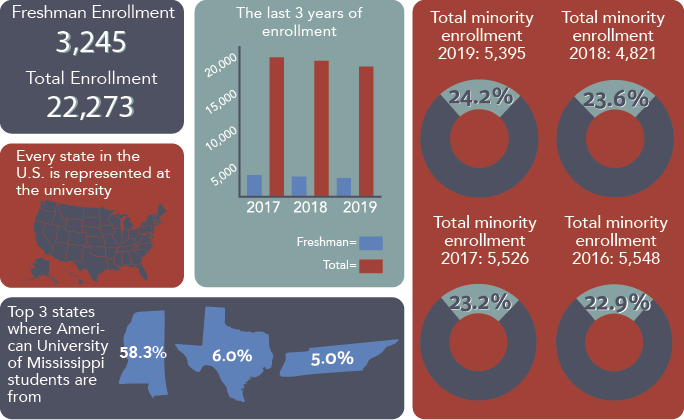
Enrollment at the University of Mississippi has decreased 3.5% over the past year, according to a Thursday afternoon press release from the Institutions of Higher Learning. Illustration by Katherine Butler.
This is the third consecutive year that enrollment has fallen, and this year it fell more than it has in previous years.
Total enrollment across all University of Mississippi regional campuses and the medical center is 22,273 students, 817 fewer students than last year. In addition to the decline in enrollment at the university, enrollment at all Mississippi public universities experienced a 1.6% decrease from last fall.
However, African American and overall minority enrollment have increased greatly. African American students make up 12.5% of the university population, and the university enrolls over 200 more African American students than last year. Additionally, overall minority student enrollment increased from 4,821 to 5,395, representing a 12% increase.
Since reaching a record peak of 24,250 students in 2016, university enrollment has decreased in each following year. During the 2018-19 school year, the university enrolled 522 fewer students, amounting to a 2.2% decrease in total enrollment.
“We recognize that it is a challenging environment to recruit students because of declining numbers of college and university students nationally,” Chancellor Glenn Boyce said in a university press release. “We are addressing this challenge through additional investments in technology, marketing and recruiting.”
Ole Miss is not alone in combating declining enrollment, as national college enrollment declined 1.7% from spring 2018 to spring 2019, marking the eighth consecutive year that national college enrollment has declined.
Freshman enrollment also decreased, dropping from 3,455 students in 2018-19 to 3,245 this year, a .09% decrease.
A majority of all students, 58.3%, are Mississippi residents, the same exact figure as a year prior. The remaining 41.7% of students come from the other 49 states and represent 88 countries throughout the world.
While enrollment has dropped for a third consecutive year, the university reported that the first-year retention rate is 86.6%, the highest-recorded rate in university history.
In the past, the IHL has released preliminary enrollment data in September, updating the final figure in November. This year, the IHL did not release preliminary data, opting for a delayed release instead. In the September press release announcing the change, Alfred Rankins Jr., commissioner of the IHL, said the wait would “provide a more complete and accurate picture of enrollment.”


























